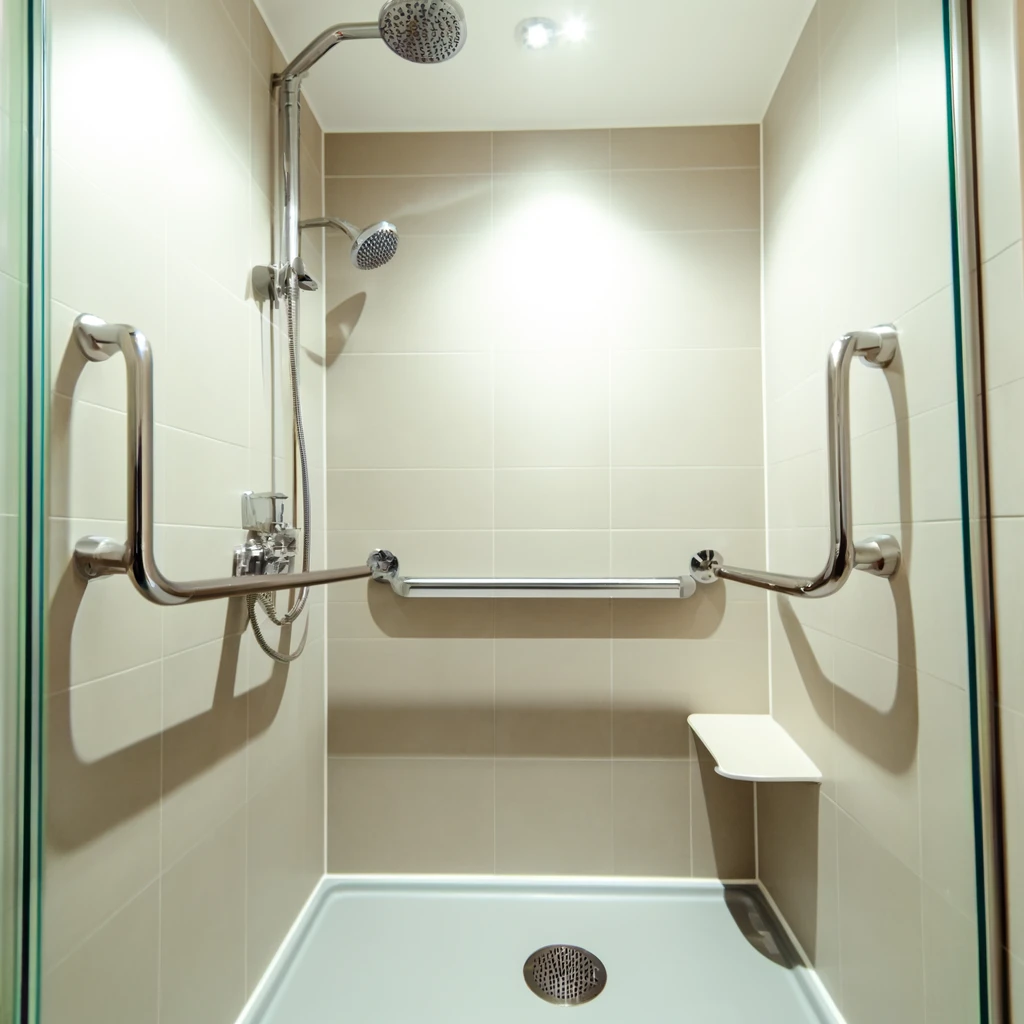Safety and autonomy in the bathroom are paramount for seniors. A sturdy bathroom grab bar for elderly individuals can prevent falls and support them in maintaining their independence. Discover the dependable options that deliver both safety and design, ensuring elderly loved ones can navigate their space with confidence.
Article Preview
Bathroom grab bars are critical safety features that prevent falls, particularly for the elderly, offering stable support in various positions around wet and slippery areas.
When selecting grab bars, consider key features such as material (stainless steel, aluminum), grip quality, length, diameter, and weight capacity, with ADA-compliant options, to ensure durability and reliability.
Strategic placement of grab bars, routine maintenance, and awareness of cost considerations, including potential financial assistance programs, are essential for long-term safety and usability in home bathrooms.
Evaluating the Need for Bathroom Grab Bars in Elderly Care
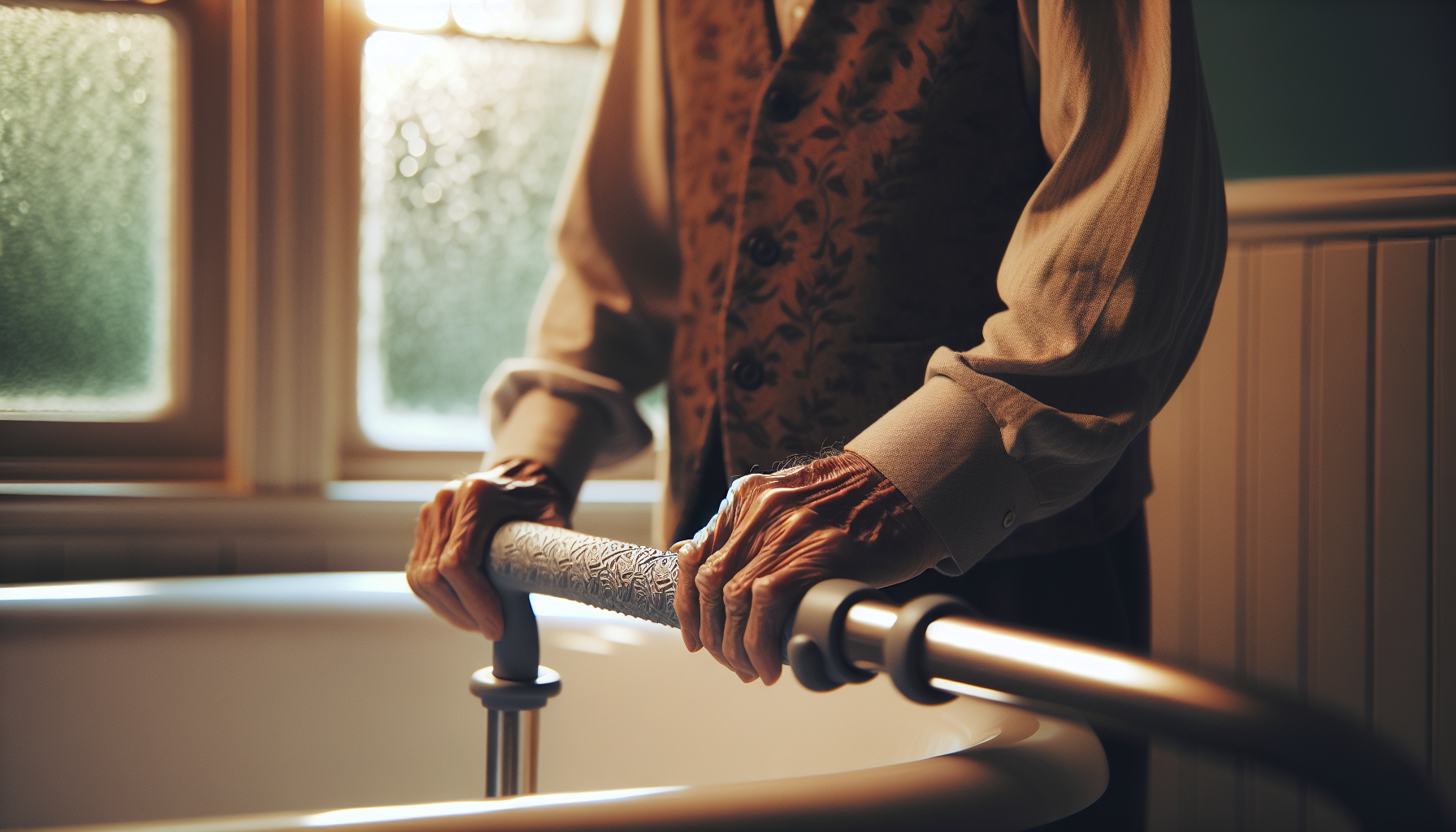
An alarming number of falls occur in the bathroom, making it a prime area for safety measures. For seniors, the installation of grab bars can be a game-changer. They lend stability, prevent slips and falls, and offer that extra bit of support for those who prefer to maintain their independence while performing personal hygiene tasks. Bathroom grab bars come in a wide array of designs, including suction bars and wall-mounted bars. However, it’s generally agreed that wall-mounted options offer the most reliable support.
Grab bars are beneficial not only for those with mobility issues but also for individuals experiencing a natural decline in strength and balance as they age. The possibility of slipping on a wet surface exists for everyone, making the installation of grab bars in bathrooms more than a proactive measure – it’s a necessity.
The beauty of grab bars is that they can be installed in various positions, depending on individual needs. From the shower to the toilet area, you can place them where they offer the most support and where assistance such as bathing or toileting is most often performed. They’re not just functional – with the range of designs available today, including shower rails, they can blend seamlessly with your bathroom decor. So, you don’t have to compromise aesthetics for safety.
Identifying Risk Factors for Falls
We can’t speak about the need for grab bars without discussing the risk factors for falls. You see, seniors are more susceptible to falls due to their fragile bones. Even minor falls can lead to fractures, necessitating extensive medical intervention and lengthy recovery periods.
When you weigh the potential consequences, installing grab bars seems like a small price to pay for safety and peace of mind, wouldn’t you agree?
The Role of Grab Bars in Fall Prevention
Having recognized the importance of grab bars, we now turn our focus to their role in mitigating falls. Bathrooms, with their damp conditions, pose an elevated risk of slips and falls. Fortunately, grab bars offer a robust handhold, significantly reducing this risk.
Some benefits of grab bars in preventing slips and falls include:
Providing a secure handhold in wet and slippery conditions
Offering stability and support for individuals with balance issues or mobility limitations
Helping individuals maintain their balance while getting in and out of the shower or bathtub
Assisting individuals in lowering and raising themselves from the toilet
Peened grab bars with their textured surface are ideal for moist environments, offering a superior grip that’s critical in preventing slips.
Grab bars can be installed horizontally or vertically, each serving a different purpose. Here are some benefits of each:
Horizontal grab bars offer stability when standing or sitting in the shower.
Vertical grab bars assist with the motions of standing up or sitting down.
Even small grab bars mounted vertically, when installed properly on a stud, significantly reduce the risk of falling during tub entry or exit.
An essential aspect is the space between the wall and the grab bar, which should allow for quick and easy grasping, directly contributing to fall prevention.
Strategic placement, tailored to the user’s needs, enhances the efficacy of grab bars.
Essential Features of a Reliable Bathroom Grab Bar
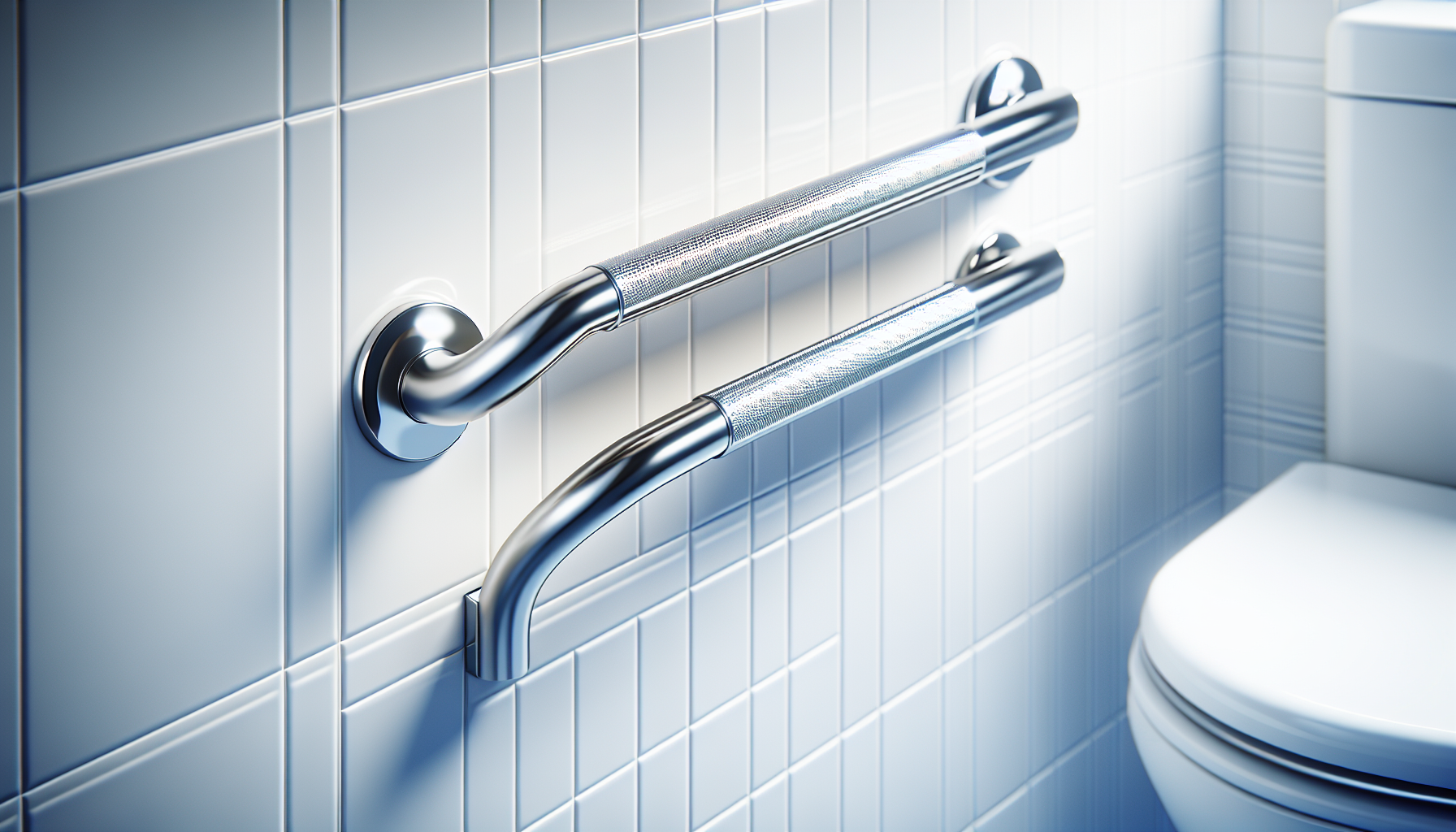
In your quest for a reliable and durable bathroom grab bar, it’s essential to scrutinize certain characteristics such as:
Material: Grab bars made of stainless steel, aluminum, or high-density plastic resins offer durability.
Grip: A textured surface is also beneficial as it ensures a better grip, especially when hands may be wet.
Length: Consider the length of the grab bar to ensure it provides adequate support.
Diameter: The diameter of the grab bar should be comfortable to hold.
Weight: Check the weight capacity of the grab bar to ensure it can support the user.
By considering these characteristics, you can find a bathroom grab bar with an integrated safety bar that meets your needs for safety and stability.
Bathroom grab bars come in an array of lengths, from 12 inches to over 32 inches, and with diameters between 1 inch and 1.5 inches. This range caters to various hand sizes and support needs. When it comes to weight, it typically varies from 1 to 9 pounds, impacting portability and ease of installation. Some sets even include two bars for added convenience and support.
In addition to the basic features, you can also find grab bars in different styles, finishes, and sizes. Retailers cater to unique bathroom layouts and individual preferences. A product marked with ADA compliance indicates its safety and functionality. So, whatever your needs or aesthetic preferences, there’s a grab bar out there for you.
Material and Grip
Particular attention should be given to the material and grip of the grab bars. Those with textured handles prove advantageous in assisting seniors maintain balance and alleviate joint strain. This feature is particularly crucial in wet bathroom environments, where the risk of slipping is high. A textured grip offers better slip resistance, enhancing safety and providing an essential support mechanism.
Another important consideration is the material of the grab bar. You want a material that’s not just sturdy but also resistant to rust. High-quality, rust-resistant materials like stainless steel are imperative for the longevity and safety of metal grab bars in bathrooms. After all, the last thing you’d want is a rusted bar that compromises safety.
Weight Capacity and Durability
A reliable grab bar should have a minimum weight capacity of at least 250 lbs to ensure safety and durability. This feature is particularly important if the user relies heavily on the grab bar for support. Some stainless steel bathroom grab bars undergo rigorous testing and can support weights of up to 500 pounds, showcasing their superior strength and reliability.
While you might be tempted by the convenience and cost-saving of suction cup grab bars, they are not recommended for users over 250 pounds or for those needing substantial support.
As part of your maintenance routine, regular checks for signs of wear, such as corrosion or looseness, are essential in maintaining the stability and longevity of the grab bars.
Installation Requirements
For grab bars to serve their purpose effectively, it is paramount that they are installed correctly. They should be securely installed into wall studs to support the user’s full weight. If wall studs are not located where you need the grab bars, use recommended mounting anchors for safety.
A minimum clearance of at least one inch should be maintained between the grab bar and the wall to provide adequate grip space. Proper installation is crucial, and hiring a professional is recommended to ensure solid mounting, especially as standard studs are not always predictably located. Your safety is worth the investment, isn’t it?.
Strategic Placement of Grab Bars for Optimal Safety
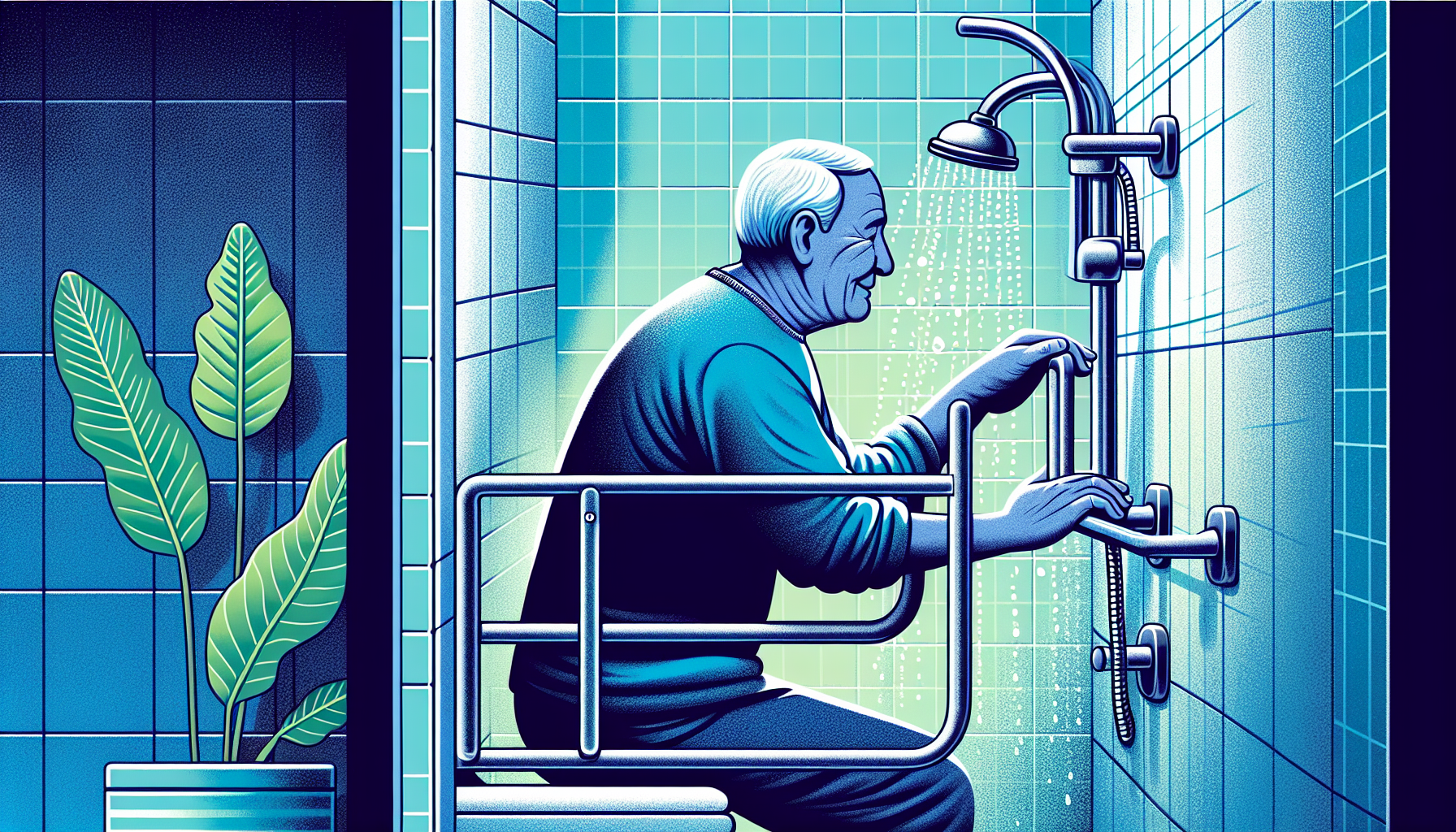
While installing grab bars is essential, placing them strategically is equally crucial. To install grab bars effectively, consider areas near wet and slippery surfaces in the bathroom to maximize safety for the elderly. These areas include the shower, bathtub, and toilet, which are all high-risk zones for falls.
How high should you install the bars? For tub sides, they should be 34-36 inches above the floor, and for back walls, they should be 9 inches above the shower seat level. These heights allow for easy transfers and optimal support. But remember, one size does not fit all. Grab bars should cater to individual needs, taking into account factors like mobility levels, height, and dominant hand. Customizing the placement ensures optimal support and safety.
In some cases, a smaller diameter or a non-slip finish might be beneficial, particularly for individuals with reduced grip strength. These features enhance their ability to maintain hold and stability, making the bathroom a safer space for them.
Shower and Bathtub Areas
The shower and bathtub areas are particularly slippery, increasing the risk of injury for seniors. Hence, it’s important to have safety features like grab bars and a shower grab bar in place. Horizontal grab bars should be installed near shower seats or benches, such as a shower chair bench, for users who may need to sit or lean during their shower. If the shower has a built-in seat, a vertical grab bar should be placed on the side wall, about 18 inches from the back wall, to assist users in maneuvering into a standing position. In some showers, a wheelchair or rollator can be used in conjunction with the grab bars to offer additional support.
In addition to grab bars, here are some other safety features that can make your bathroom a safer space for seniors:
Tub rails: installed on the wall of the tub or clamped onto the side of the tub, aiding elderly individuals with safe entering and exiting.
Shower seats: provide stability and support while showering.
Weighted shower curtains: reduce water spillage on floors and minimize the risk of falls.
Combining safety bars with grab bars can help ensure the safety and well-being of seniors in the bathroom.
Near the Toilet
The area around the toilet is another critical zone that needs attention. Grab bars serve crucial roles here, aiding elderly individuals with sitting and standing and offering additional stability. They should be placed within reach of the toilet to help with seat transfers and provide support while seated. After all, maintaining balance and ensuring safety while performing such basic tasks is a priority.
If extra support is needed, a toilet rail or a toilet seat frame can be considered. These additions can aid in safe transitions and provide that extra bit of confidence for seniors using the bathroom independently.
Versatile Positions for Support
Grab bars need not be confined to the bathroom. They can be installed along home pathways and at interior doorways to provide seniors with the necessary stable support to navigate their living space securely. Straight grab bars offer a versatile solution, suitable for users with varying hand and wrist strengths, catering to a diverse range of needs.
Grab bars with a 9-hole flange design allow for a flexible installation process, enabling secure mounting in various bathroom configurations. Remember, each individual is unique, and the positioning of grab bars should reflect these individual needs and preferences for optimal support and safety.
A Guide to Buying Options: Where to Find Bars
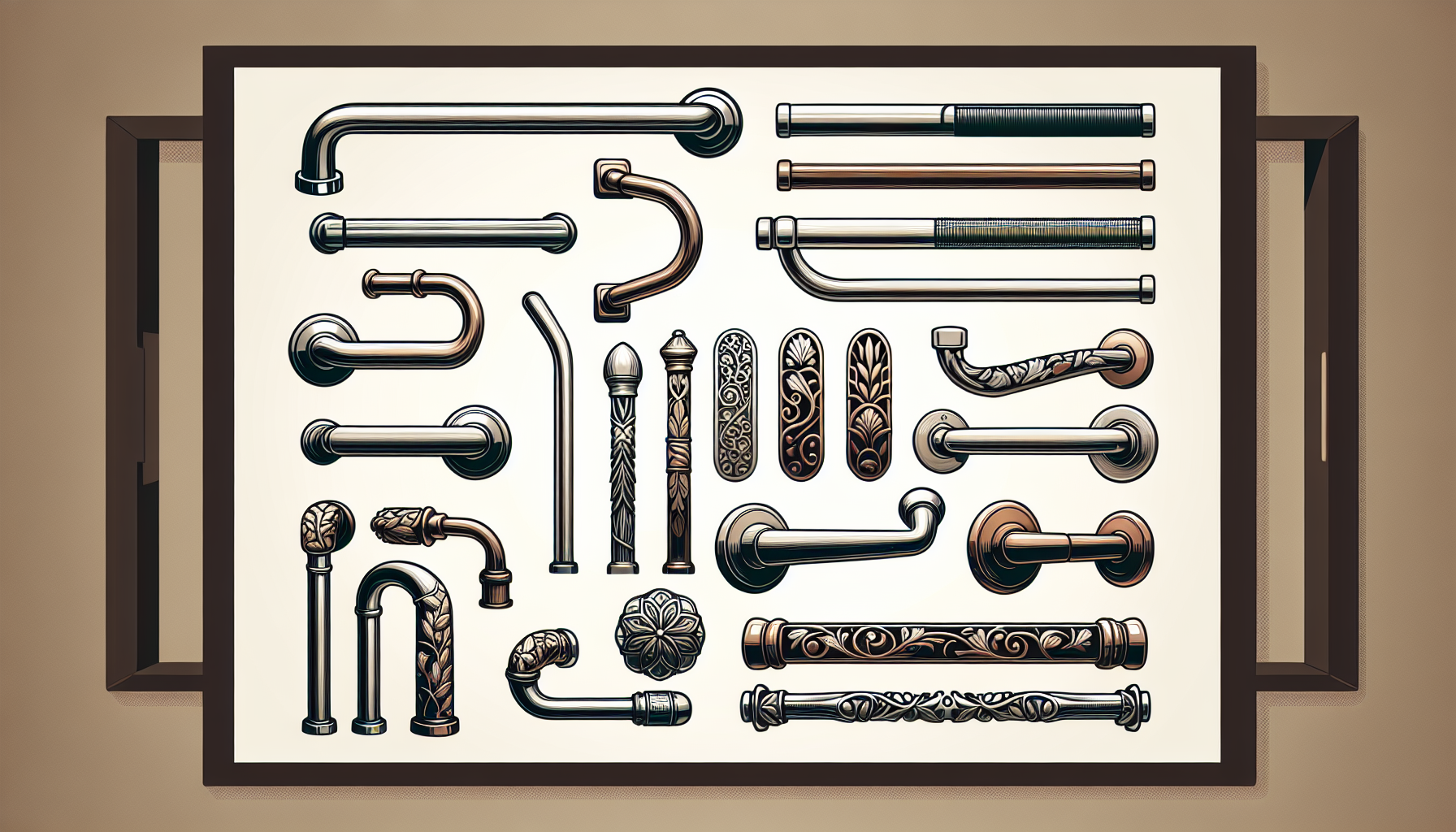
Having acknowledged the necessity for grab bars, and become familiar with their features and strategic installation, you may wonder where to find these essential bathroom aids. You have the option of purchasing high-quality bathroom grab bars from home improvement and hardware stores as well as online retailers like Amazon and medical supply stores. These outlets offer a variety of options to suit your needs. So, whether you prefer shopping in person or from the comfort of your home, there are options to suit your preference.
Designer and high-end grab bars often come with the perk of complimentary shipping on orders that exceed a certain value. So, while you’re at it, consider investing in other bathroom safety products too, maximizing the benefits of your shopping experience.
Online Retailers and Health Stores
Reputable online platforms such as Amazon.com provide a diverse selection of bathroom grab bars, including shower grab bars, for elderly home support. These online retailers offer grab bars with various attributes, including multiple length options, high weight capacities, and budget-friendly options.
So, you can compare products, read reviews, and make an informed decision without stepping out of your home.
Local Home Improvement Centers
If you prefer to see the product before you buy, local home improvement centers like Ace Hardware offer a selection of bathroom grab bars. The advantage here is that you can:
Compare products side-by-side, aiding in the selection of suitable products for your needs
Benefit from professional advice
Perhaps discover other safety products that can enhance your bathroom’s safety.
How to Ensure Long-Term Use and Maintenance
After installing the grab bars, especially in showers, it’s important to understand their maintenance for long-term use. Just like any other product, grab bars need consistent upkeep and cleaning to uphold their supportive function and structural integrity. After all, it’s not just about installing them; it’s about ensuring they remain effective and safe for years to come.
Cleaning grab bars is quite easy. Here are some tips:
Regular cleaning with mild soap and water will help restore the original condition.
Avoid abrasive cleaners or harsh chemicals to prevent damage to the finish.
Don’t forget to dry them thoroughly to prevent rust and maintain their condition.
Regular Inspection and Tightening
Regular inspections of grab bars are crucial for safety. They should be inspected at least once every six months to ensure they remain in good condition and function as intended. During inspection, verify that the grab bars are stable and that all screws are tight to maintain the security of the bar. Ignoring these simple checks could compromise the safety and effectiveness of the grab bars.
Cleaning and Upkeep
While we’ve touched upon this, it’s worth repeating that regular cleaning and upkeep are integral to maintaining the longevity and hygiene of grab bars. Using a mild, non-abrasive cleaner helps prevent the buildup of dirt, soap residue, or bacteria. This simple routine not only preserves the grab bar’s condition but also ensures that it remains safe to use.
Some stainless steel grab bars even include a moisture-resistant silicone seal, enhancing their durability in wet environments. With proper cleaning practices, you can preserve this feature and ensure your grab bars stand the test of time. After all, a well-maintained grab bar is a safe grab bar.
Cost Considerations for Bathroom Safety Upgrades
While it’s prudent to invest in bathroom safety enhancements such as grab bars, it’s equally important to factor both the costs of purchase and installation into your budget. Grab bars are available at different price points, including:
Wall grab bars ranging from $15 to $80
Floor-to-ceiling tension grab bars from around $140 to over $300
Free-standing toilet grab bars from $30 to over $100
The cost variation among grab bars is due to factors like type, style, size, and material quality. Installation costs can also vary based on complexity and quality of materials used. Typically, grab bar installation costs range from approximately $132 to $313 per bar. Also, remember to factor in the lifespan of grab bars, which typically last 5-10 years before needing replacement, with regular inspections ensuring their integrity and safety.
Price vs. Quality Trade-Offs
While price is undoubtedly a consideration, it’s important not to compromise on quality. After all, the purpose of a grab bar is to enhance safety, and a poorly constructed grab bar could do more harm than good. Therefore, prioritize build quality and durability when selecting bathroom grab bars.
It may be tempting to opt for cheaper options, but remember that a high-quality product is a worthwhile investment in safety.
Insurance and Assistance Programs
While the cost of grab bars and their installation can add up, there are resources available to help with these expenses. Though Original Medicare does not cover the cost of grab bars, it’s worth checking with your Medicare Advantage Plan or other health insurance provider for potential coverage.
Organizations such as Area Agencies on Aging provide modification and repair funds that seniors can use for installing grab bars. Additionally, Rebuilding Together, Inc. assists low-income seniors with home modifications. Some lenders offer home equity conversion mortgages or reverse mortgages that can finance home improvements for the installation of grab bars. State-specific resources and assistance for home modifications can also be found through platforms like Homemods.org.
For renters, the Fair Housing Act allows for the installation of grab bars in residences, which may incur additional costs for purchase and installation.
Senior Safety
Bathroom safety for seniors is a significant concern and should be a consideration of any good senior care plan. Bathroom grab bars play a critical role, from preventing falls to preserving the dignity and independence of the elderly. Thus, the importance of grab bars cannot be overstated. As we have seen, there are numerous factors to consider when choosing grab bars, including their material, weight capacity, installation requirements, and strategic placement.
Investing in high-quality grab bars and ensuring their proper installation and maintenance is a small price to pay for the safety and peace of mind they provide. As you navigate the journey of aging or caring for an elderly loved one, remember that safety should never be compromised. With the right grab bars in place, the bathroom can once again be a sanctuary of comfort and safety.
Frequently Asked Questions
What are the most important features to look for when buying a grab bar?
When buying a grab bar, look for sturdy stainless steel material, a textured grip, suitable length and diameter, and a good weight capacity for safety and durability.
Where should grab bars be installed for optimal safety?
For optimal safety, grab bars should be installed near wet and slippery surfaces in the bathroom, such as the shower, bathtub, and toilet area. It’s important to customize the placement based on individual mobility levels, height, and dominant hand.
How often should grab bars be inspected?
You should inspect grab bars at least once every six months to make sure they are in good condition and working properly.
What are the cost considerations when installing grab bars?
When installing grab bars, consider the varying costs of the bars themselves, as well as the installation expenses, making it important to budget for both. These costs to retrofit a home for senior care are often included in the same conversation about the total cost of in-home care.
Are there any resources available to help with the cost of grab bars and their installation?
Yes, you can explore resources such as Medicare Advantage Plans, health insurance providers, Area Agencies on Aging, Rebuilding Together, Inc., and state-specific resources listed on Homemods.org to assist with the cost of grab bars and installation. These resources can provide valuable support in managing the expenses.
